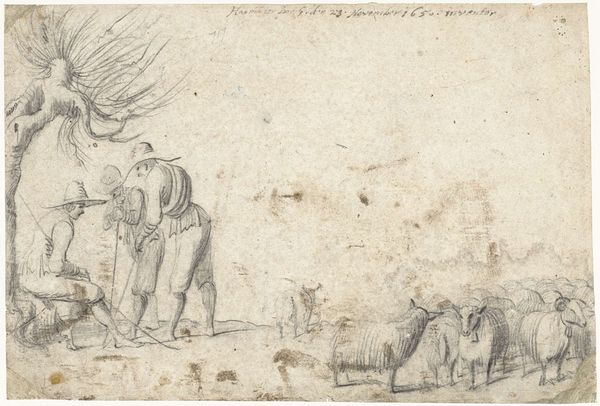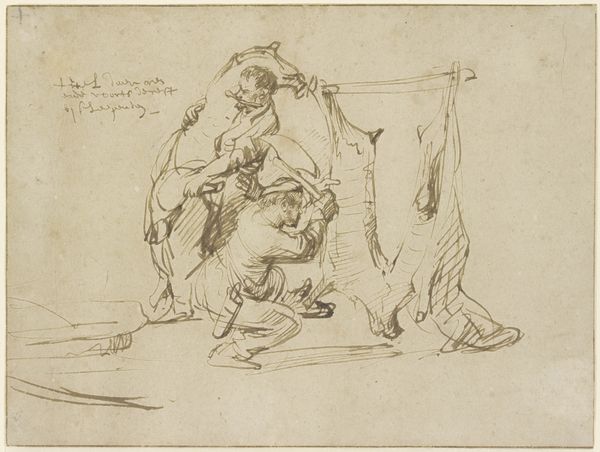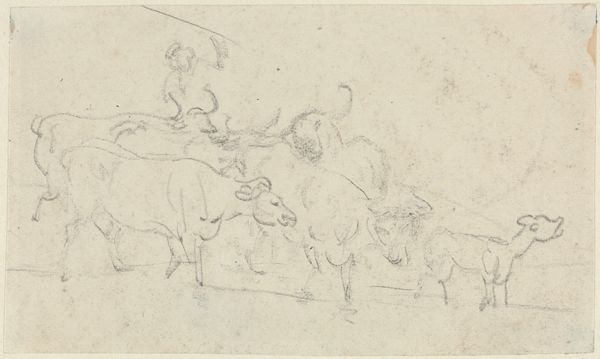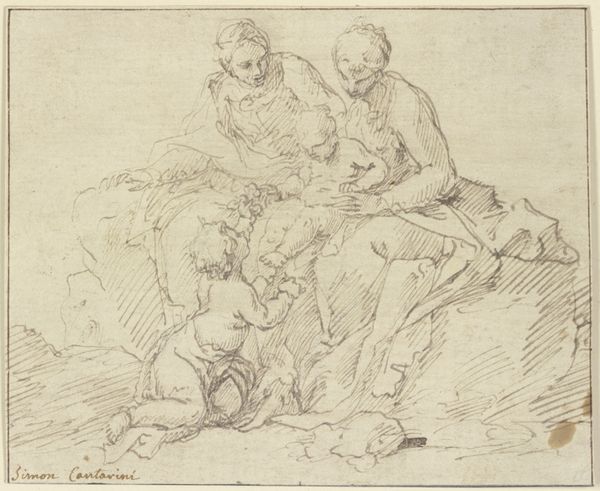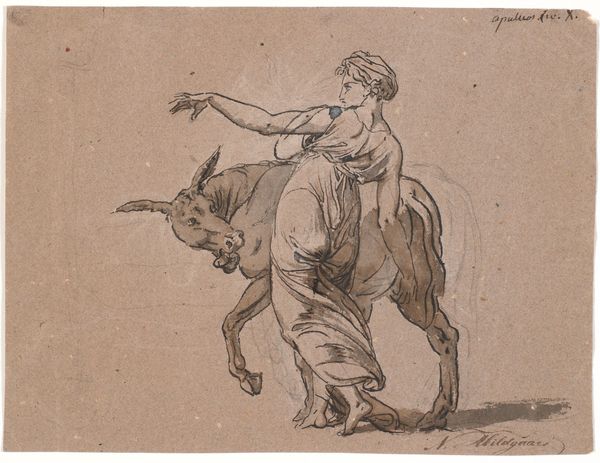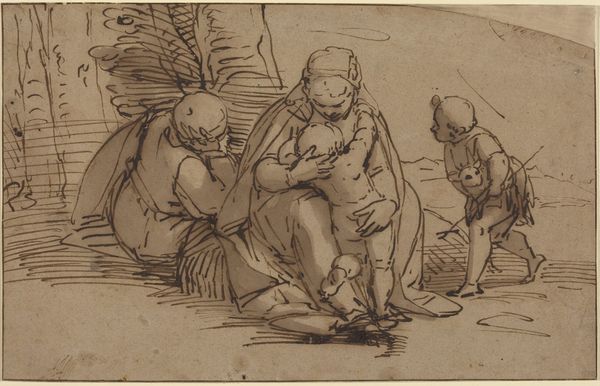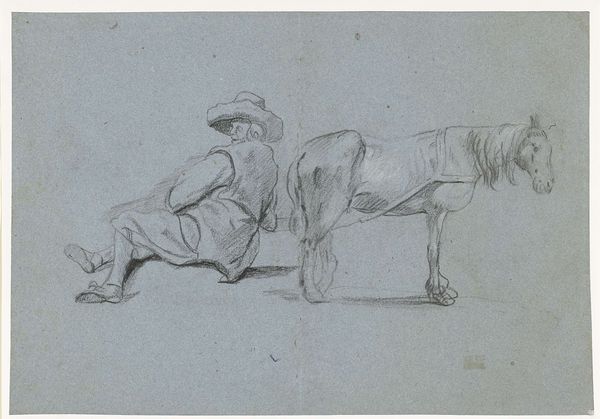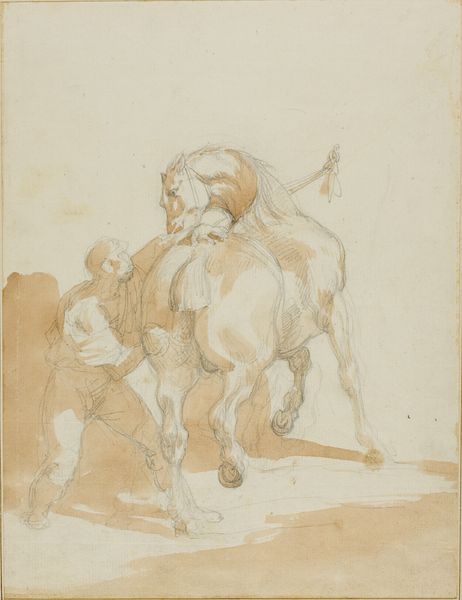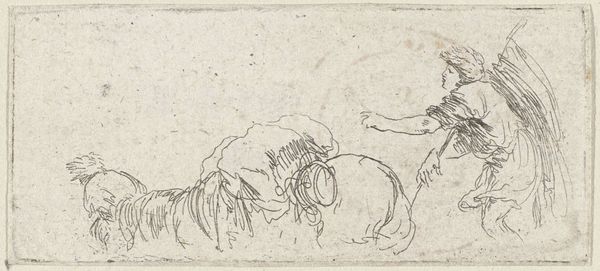
drawing
#
drawing
#
netherlandish
#
baroque
#
landscape
#
figuration
Copyright: Public Domain
Curator: Here we have a drawing entitled "Zwei Knaben mit einem Ziegenbock," or "Two Boys with a Goat," attributed to Karel Dujardin. Though undated, Dujardin was a Dutch Golden Age painter active during the Baroque period, celebrated for his idyllic pastoral scenes. Editor: It’s quite striking! My first impression is one of slight melancholy. The reddish-brown ink gives it a warm feeling, yet the young boys appear burdened by the weight, both literally and perhaps metaphorically, of the animal they’re carrying. Curator: You know, such scenes, showing children involved in everyday rural labor, became quite popular. They represented a particular vision of humble life, appreciated by an increasingly urbanized viewership in the Netherlands, but were also intended to communicate a more moral message about industry and simplicity. Editor: Industry certainly comes to mind. The younger boy straining under the goat's weight feels rather poignant when considering child labor in broader historical contexts. I can't help but see this artwork through a more critical lens – as a depiction which naturalizes such activities within a seemingly idyllic landscape. Curator: That's a good point. We must be careful about romanticizing the past. There is very little romantic about working hard. Of course, Dujardin was celebrated for precisely that ability—his facility for integrating figures and landscapes, drawing on Italian influence from his travels, to produce scenes considered visually pleasing. Note also the spontaneity in the mark-making. This appears a quick study rather than a highly finished piece. Editor: I appreciate the emphasis on its seeming artlessness! It reminds me how visual registers associated with the bucolic still saturate our present. And whether its function is aesthetic pleasure or an endorsement of values related to innocence, art such as this invariably carries ideological weight. Curator: Agreed. Ultimately, it invites us to consider how the portrayal of childhood innocence intertwines with historical realities. Editor: And it reminds us that looking, really looking at art, requires us to connect visual pleasure to more challenging questions.
Comments
No comments
Be the first to comment and join the conversation on the ultimate creative platform.
